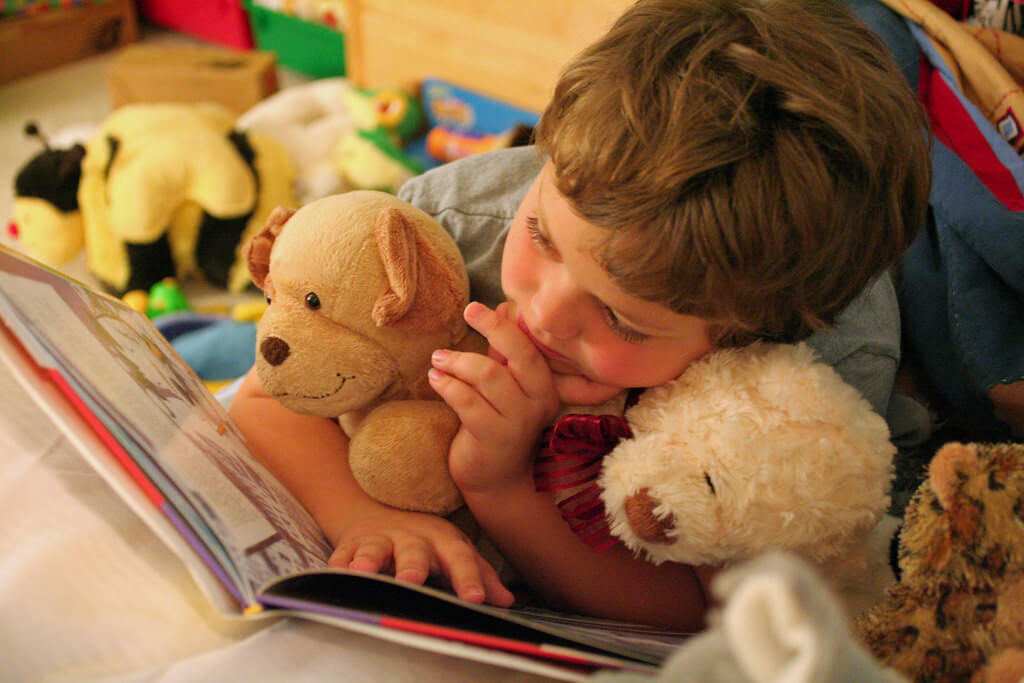
As the parent of a child with autism, you may be wondering how to begin approaching reading with your loved one. Whether your child has mild or severe Autism Spectrum Disorder, you can learn to make reading an engaging and fun activity. By reading with your child you can help to build their listening skills and language development. Why not connect with your child through the wonders of reading?
We have some tips to help you begin to read with your son or daughter in a positive and impactful way.
Build a Love for Books
Not everyone is naturally inclined to love reading. You may have even struggled to gain interest in learning how to read as a child, but this learning process is an exciting and valuable time in your child’s life.
Children with Autism Spectrum Disorder (ASD) may have a challenging time using words and movements to express what they are thinking, and they may have short attention spans. If your child has a difficult time paying attention for long periods of time, start by reading for short periods of time. Use your hands to point out images in the story and reiterate their corresponding names; this will help draw connections in your child’s mind. In some cases, children with ASD may learn to read at an early age and show great interest in very specific topics for their reading. If your child shows these tendencies, try to feed his/her interests with exciting books. Whatever the case may be, and no matter where your child is on the spectrum, finding a way to catch your child’s attention and make reading fun can impact their overall social and learning skills.
Create a Routine
Establishing a structure for your child with ASD can help reduce stress and confusion that he/she may experience when they are introduced to reading. Therefore, if reading is a new endeavor for you and your little-one, finding a way to make it a part of a routine that is already in place can help your child learn more quickly and make the transition to new learning territory less overwhelming.
One way to help build reading into your child’s routine is to find a transitional time of day. For example, if your child routinely takes a nap at 1 p.m., you can sit down with your child at 12:30 p.m. to read a book. Eventually, this can become a part of his/her daily routine, and you can find other fun ways to fit reading into smaller time frames throughout the day. Ask your child’s behavioral therapist for additional ideas on how reading can fit into your child’s individual routine and educational level.
Read Aloud
Reading is both a visual and an auditory skill. You can greatly benefit your child’s learning by reading aloud to him/her. When they process the spoken word he/she may ask questions about what you have said aloud, and this opens the door to a conversation about the story itself. You can increase your child’s language comprehension in this way. As your loved one listens to your voice, he/she can learn how the words are spoken and how you shape your mouth to vocalize the written word. This can help with their communication skills.
Starter Steps
When you begin reading with your child, start by only spending a few minutes at a time reading together. You can build up the time you read together over time, and you and your loved one will be enjoying yourselves and having fun in no time!
Here are a few additional tips on how to make reading fun and impactful for your little one:
- Read and re-read the same stories. This can help your child learn the language.
- Talk together about the pictures in books and the story itself. Don’t be afraid to periodically stop and ask if he/she has any questions.
- Go to your local library and borrow books with plenty of pictures. Books with pictures of faces can be especially helpful for teaching your child about emotions.
- Books with buttons, puppets, and other physical elements, as-well-as sounds can help your child engage even more with reading.
Spending time with your child as you read together can not only improve your connection, but you can also help build up your child’s communication skills. It is an exciting adventure that you can begin with a few simple steps.
At Hidden Treasures, our team is dedicated to providing quality ABA behavioral therapy to children with an Autism Spectrum Diagnosis. Our Board Certified Behavior Analysts (BCBAs) assess your child and design individually tailored treatment programs to help in the areas of language and communication and social skills. Ask us how we can work with you and your child with autism TODAY.


